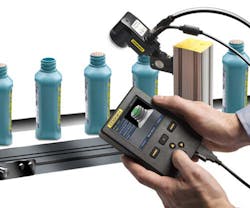Role of Industrial Internet of Things for Warehouse
The warehouse is on the trajectory to implement many of the capabilities sought in the vision of the Industrial Internet of Things (IIoT), according to Sal Spada, of ARC Advisory Group.
Spada points to eCommerce as the driver in this sector as companies such as Amazon, Walgreens, and LL Bean are seeking out solutions that are “ robust, high speed, and have little labor content.”
As retail faces pressure to reduce labor, increase production output, and reduce warehousing space, they are looking to the warehouse component to use automated and semi-automated systems used to track, retrieve and store goods. Palletizing robotics, autonomous fork lifts, tracking systems, and scanning tunnels are now the foundation of the current generation of highly automated warehouses, explains Spada.
But what he sees as the underpinning of many of these systems is the proliferation of machine vision technology which is being utilized as an advanced sensor.
Here is his take on the future of these sensors.
Machine vision sensors have been making inroads in warehousing as material handling automation seeks to improve operational effectiveness while also increasing the range of products that can be handled. Automated material handling systems are not only tracking cartons through the maze of conveyance and sortation systems, but automatically determining volume and weight without interrupting the flow of parcels.
Machine vision has been an enabling technology to solve these challenging problems as it provides a more robust solution in a world where shapes, weights, and identification are not always easy to determine.
Machine vision integrated with robotic systems and high speed automation is making inroads into warehouse on several fronts which include barcode reading, volumetric scanning, package inspection, natural feature based navigation, and 3D guided robotic palletizing. In many instances, machine vision has been the only viable way to solve an automation problem.
Read more on IoT in the warehouse.
